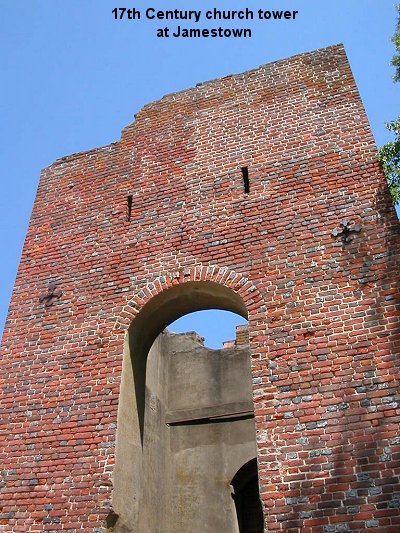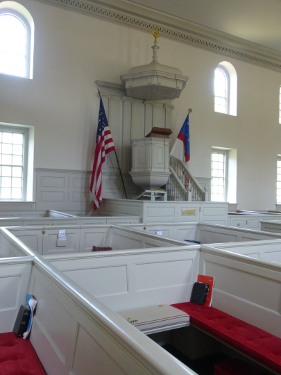
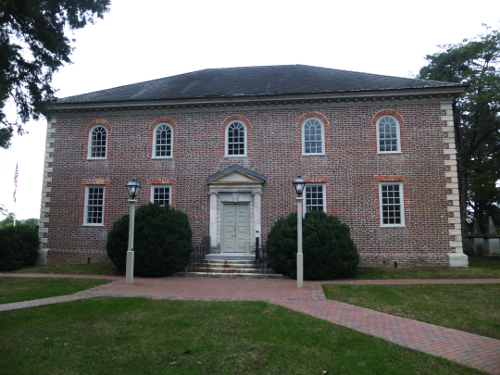
at Pohick Church in Fairfax County, the Anglican minister preached from a position of authority to parishioners sitting in boxed pews within a classic example of Georgian architecture


at Pohick Church in Fairfax County, the Anglican minister preached from a position of authority to parishioners sitting in boxed pews within a classic example of Georgian architecture
Up in Cape Cod and Boston, the leaders of those initial colonists in Massachusetts that started arriving in 1620 had a zeal to create a new theocracy. They wanted to build "city on a hill," to become a shining example to others.
The Separatists (later called Pilgrims) that sailed on the Mayflower and then the Puritans who arrived later wanted to create an environment in which their one majority perspective would dominate the religious and political culture. The people presented in so many elementary school Thanksgiving pictures, wearing black hats and carrying a blunderbuss, were seeking religious freedom for themselves but not for anyone else with different beliefs.
The Jamestown and subsequent settlers to Virginia provide a clear contrast. Nearly all of the Virginia immigrants in the 1600's came for economic reasons - to get rich, or get richer. The Europeans who colonized Virginia in the 1600's were not driven primarily by a desire for religious freedom. Virginia was not settled by a subset of English culture that wanted to create just one form of worship and one religious organization to manage church life.
To early Virginians, material wealth was more interesting than freedom or salvation or politics. The first Europeans to land in Virginia were Spanish missionaries willing to die for their beliefs, but the English settlers were motivated by desires for land and wealth more than the chance to proselytize the "heathen" or establish a religious refuge.
The initial Virginia colonists were not anti-religious; they considered religion to be a fundamental part of both life and government. They assumed the Anglican church would be the "established" church, supported by taxes that were imposed by governmental authority.
From 1607 until the American Revolution, the Anglican church determined the official form of worship in Virginia. Anglican leaders in England resolved theological disputes, and church vestries in Virginia provided key social services (such as arranging the care of orphans) in the colony.
Government and religious leadership were combined at the top. The King of England was the head of the Anglican Church, and the new translation of the Bible was named in honor of the same king for whom Jamestown was named.
Unlike some other colonists, Virginians did not cross the Atlantic Ocean to create a "city on a hill" or a place where different religious faiths would be allowed. In colonial Virginia, there was no expectation that church and state would be separate, or that dissent would be encouraged by government officials.
Virginia was often hostile to Catholics, in part because of the local rivalry with Catholic Maryland and the national rivalry with Catholic France. As early as 1613, Captain Samuel Argall sailed north from Virginia to destroy a French colony of "Papists" in Acadia. Only one Catholic, George Brent, was elected to the House of Burgesses during the colonial era. The first permanent Catholic congregation in Virginia (St. Mary Catholic Church in Alexandria) did not get organized until 1795.1
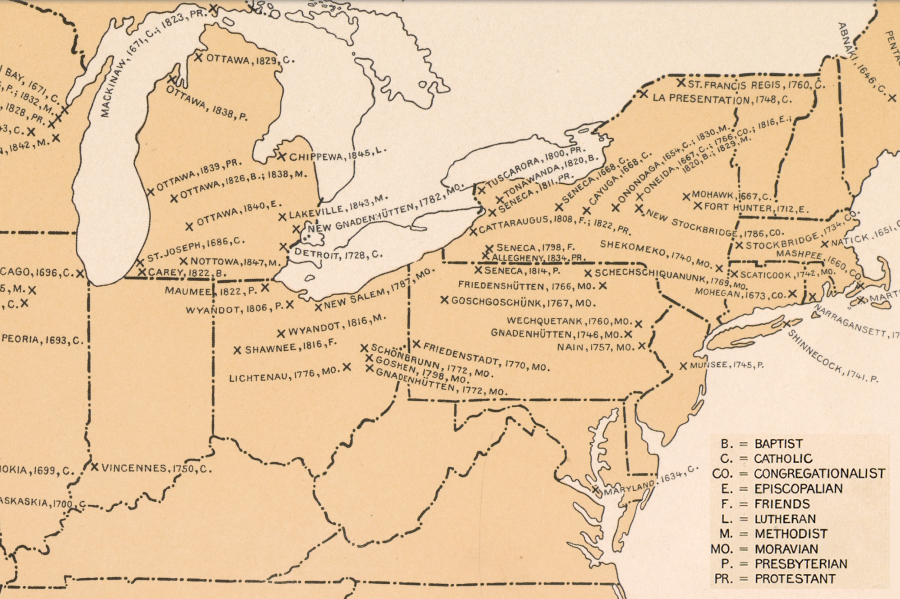
the only Catholic mission to Native Americans in Virginia was in 1570-71, when Spanish missionaries
Source: Atlas of the Historical Geography of the United States, Indian Missions, 1567-1861 (Plate 37, digitized by University of Richmond)
Despite the hostility towards other faiths, the Anglicans of Tidewater Virginia showed some flexibility in order to attract settlers. In the early 1700's, Governor Spotswood consciously recruited Presbyterians and other Protestants belonging to various German/Swiss denominations. He wanted them to move south from Pennsylvania to Virginia, and to establish farms and new communities west of the Blue Ridge.
Spotswood's own land claims were east of the Blue Ridge, and he was not shy about using his government influence to enrich himself, but he encouraged dissenters such as the "Pennsylvania Dutch" to buy land in the Shenandoah Valley. That was an area where he would not benefit directly, but getting new colonists to live west of the mountains would create a "tripwire." If Native Americans or the French launched an attack on the colony from their bases in the Ohio River Valley, Spotswood expected the new settlers to respond and to provide an essential warning to the English settlements east of the Blue Ridge.
The Germans and Scotch-Irish were not members of the Anglican Church, but were still reliable Protestants. The presence of non-Anglicans on the western edge of Virginia was a small price to pay to create a buffer against enemies living further west. Immigration by Catholics from Maryland was not encouraged by Governor Spotswood or the General Assembly, since Catholics would have been a less-reliable buffer against possible French incursions.
Religious and cultural differences affected settlement patterns. In contrast to the colonists east of the Blue Ridge, the immigrants west of the mountains did not acquire large groups of slaves and did not grow tobacco for export. Instead, the new settlers developed small farms growing grain and cattle, and sent their agricultural products to Philadelphia for sale.
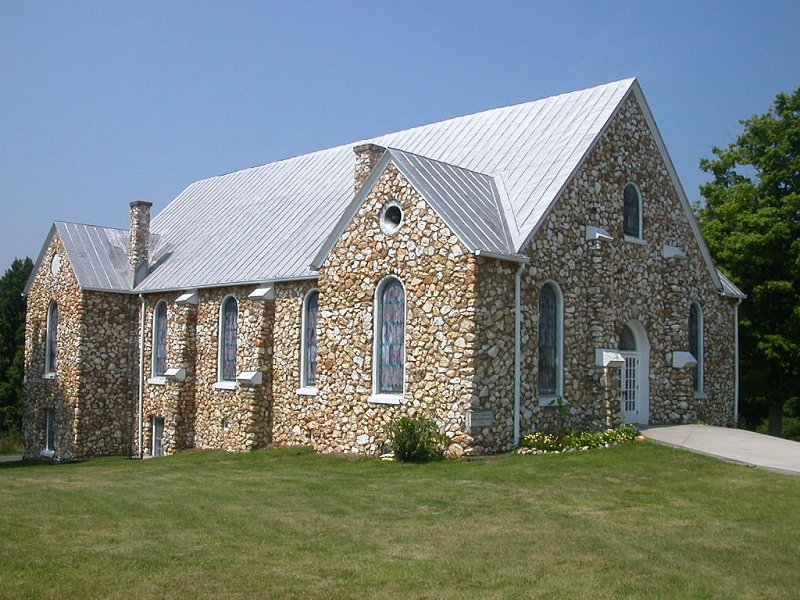
Buffalo Mountain "rock church" built by Rev. Bob Childress (Caroll County)
Today, the German Mennonite heritage is still reflected west of the Blue Ridge in style and transportation. Harrisonburg is home to the large James Madison University, and every style of modern clothing is visible in town. In the same city, it is easy to find women who still dress plainly and wear a white head covering. Some traditionalists still drive horses-and-buggies to Sunday services near Dayton.
During the colonial period, the Anglican Church was intimately connected to the government. County sheriffs collected mandatory taxes that paid the salary of the minister and for maintenance of church buildings.
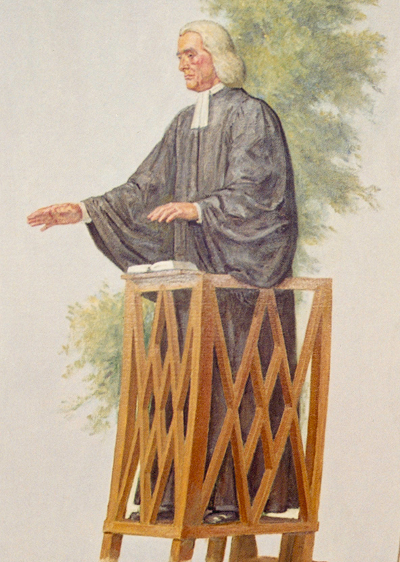
there was no separation of church and state in Virginia's colonial era, and Baptist, Presbyterian, and Methodist preachers had to speak spoke outdoors when not allowed to use the taxpayer-funded Anglican houses of worship
Source: Architect of the Capitol, The First Federal Congress, 1789
Adoption of the Virginia Statute for Religious Freedom in 1786 ended tax support for the church. Virginia's political leaders officially "disestablished" the church from government, and established a new tradition of maintaining a wall of separation between religious and government organizations.
In Virginia and then in the new United States, government no longer had a role in determining the "correct" faith of citizens. People could select whatever religion they preferred, switch their religious affiliation at any time, or could choose to live a completely secular life and not to associate with any religious group at all.
James Madison and Thomas Jefferson led first Virginia, and then the new United States, to end government involvement in religious-oriented activities with the Virginia Statute for Religious Freedom and the First Amendment to the US Constitution ("Congress shall make no law respecting an establishment of religion, or prohibiting the free exercise thereof").
They moved America past beyond official tolerance, which could be revoked at the whim of a later set of officials such as the Edict of Nantes in France, and into permanent acceptance of various forms of religion. Government-based discrimination against people with the "wrong" faith was no longer acceptable. Choosing a religious belief was defined as a natural right, beyond the power of government.
George Washington made the distinction between toleration and acceptance clear in his "Letter to the Hebrew Congregations of Newport," written in 1790 when he was president of the United States:2
First Baptist Church in Petersburg, foundd in 1756, is the oldest continuously-operating African-American religious institution in North America.3

Rev. Joshua Thomas, the "Parson of the Islands," helped make the Methodist faith dominant on the Eastern Shore and Chesapeake Bay islands such as Tangier
Source: The Parson of the Islands (p.93)
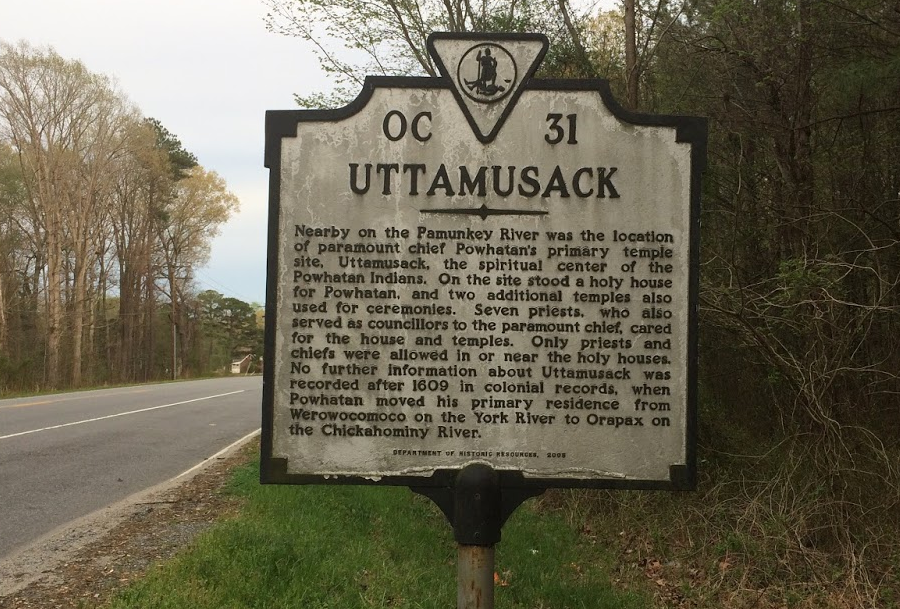
until 1609, the religious temples of Powhatan were at Uttamusack in King William County (near modern Augusta Lumber mill at West Point)
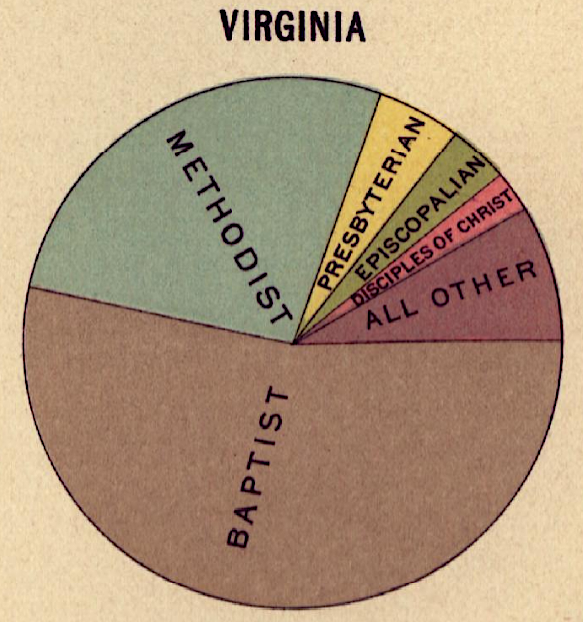
composition of church membership in Virginia, 1890
Source: Library of Congress, Statistical atlas of the United States, based upon the results of the eleventh census (1898)
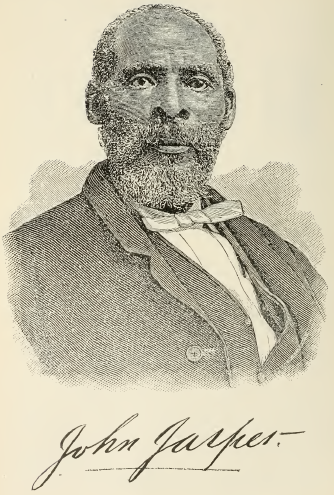
John Jasper was famous for his sermon "The Sun Do Move"
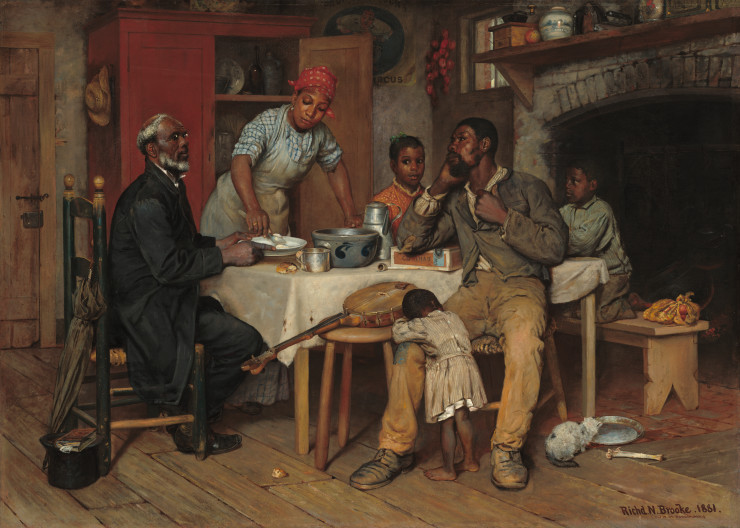
a family welcoming their elderly pastor to Sunday dinner
Source: National Gallery of Art, A Pastoral Visit (painted by Richard Norris Brooke, 1881)
